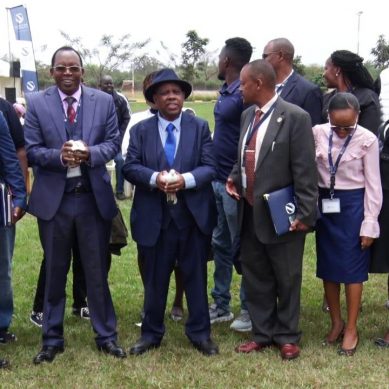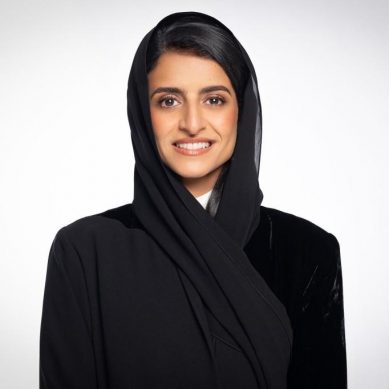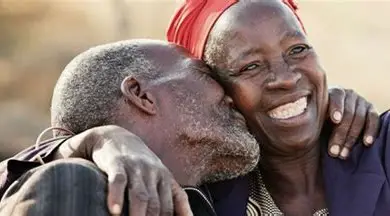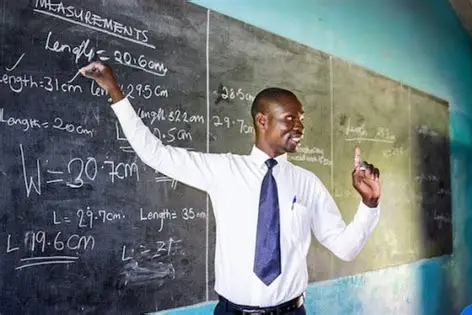
The long-term power vacuum and continued political dysfunction of the past few months raises concern that the United Nations needs to address as a matter of urgency. After weeks of in-fighting between different factions on the transitional presidential council, interim Prime Minister Garry Conille was appointed as transitional prime minister and formed a new government a few weeks ago.
But thus far, the Haitian authorities appear to have had little to no involvement in the deployment or in the planning around this crucial juncture of their country’s future.
Clarens Renois, general coordinator of the National Union for the Integrity and Reconciliation (UNIR) party – one of the coalitions with a seat on the transitional presidential council, explained that the political agreement that underpins the transition called for the creation of a National Council of Security and Defence (CNSD) that would develop a security strategy and work on the operational part of the MSS mission.
However, that council still doesn’t exist.
“We should have a security council that works with the force’s command. But now nobody knows what will happen,” he said. “There is no interlocutor. This is a plan that was conceived without the Haitians.”
James Boyard, a Haitian professor, researcher, and security consultant, voiced similar unease. “My concern is that there is no framing mechanism for this force. There should be a security council that gives strategic orientation,” he said.
Unpopular police chief Frantz Elbé – accused of links to the gangs – was replaced by Rameau Normil days before the Kenyan deployment. Widely viewed as a positive step, it nonetheless also raised more doubts about a PNH leadership transition just as the mission began.
“My impression is that the security situation in Haiti has been left to deteriorate on purpose in order to force Haitians to accept this force without asking questions,” said Renois. “Now it has become indispensable, but the insecurity started three years ago.”
What does the deployment mean for aid groups?
Several aid organisations say they hadn’t been contacted by Haitian or Kenyan authorities to discuss the implications of the mission, although some UN agencies have had meetings with the PNH.
The mission could lead to clashes between the gangs and the new force. If so, the number of injured is likely to rise, right when medical supplies are scarce and dozens of hospitals and health centres in Port-au-Prince – and the surrounding Ouest department – have already been forced to close or scale back their operations due to gang violence.
“We are afraid of the consequences of this mission, of the fact that it could inevitably provoke more violence the population can’t escape from in a city that is so densely populated,” said Jean-Marc Biquet, who leads Médecins Sans Frontières (MSF) operations in Haiti.
“We don’t want soldiers or police stationed in front of our centres,” Biquet added. “Weapons scare people, and we have already had patients not coming when there is a police car nearby because they fear being arrested, whether they are guilty of something or not.”
Anticipating a rise in violence, Mercy Corps has scaled up some of its safety protocols.
“We are updating our security and contingency plans, also our emergency preparedness plan, in case this brings more violence and there are increased needs of the population,” said Laurent Uwumuremyi, the organisation’s country director.
After Resolution 2699 was approved, both the Cadre de Liaison Inter-Organisations (CLIO), a local and international NGOs platform in Haiti, as well as the Humanitarian Country Team (HCT) – which gathers together all the UN agencies and their local partners operating in Haiti – drafted a series of recommendations to safeguard their access and reinforce the distinction between the MSS and humanitarian actors.
These included the need to establish communications mechanisms to ensure that humanitarian actors are not perceived negatively, to initiate an effective dialogue between security actors and aid groups to preserve humanitarian space, and to comply with international humanitarian law, human rights law, and standards on the use of force, among other things.
It could not be confirmed whether these recommendations had been transmitted to Haitian or Kenyan authorities.
Up until now, aid groups have mostly been working on their own.
Ahead of the deployment, the International Committee of the Red Cross started reaching out to the PNH and the Kenyan police to convey its humanitarian concerns to the stakeholders. According to Marisela Silva Chau, head of the ICRC in Haiti, the PNH has been taking part in some meetings held by the HCT and a liaison cell created several months ago by the UN’s emergency aid coordination body, OCHA.
“It’s important to have a focal point in the [MSS] to ensure all the movements and all areas of work of the humanitarian actors working on the ground are known, to prevent any problem,” said Silva Chau.
The best-case scenario is that the presence of the force will eventually allow aid programmes to fully resume and Haitians to get the assistance they need.
Garry Calixte from CORE, a crisis response organisation with several programmes in Haiti, explained how the escalation of violence has prevented them from transferring the equipment needed from the capital to other regions where they have food security, climate, and water programmes.
“If the multinational force can restore order and provide more reliable and secure road access, I believe that it will be a relief for the millions of Haitians who are in difficult situations,” he said. “There are people in Haiti who live day by day. If they can’t go out to pursue their activities, they immediately become food insecure”.
How will the gangs react?
This is really the big unknown. Security experts point out that the delay to the mission has given gangs more time to prepare. Since news broke that the MSS was actually being deployed, some gangs have gone underground, while others have stepped up attacks, staged protests, or just continued to engage in violent acts and kidnappings.
Some gang members have spread songs with lyrics that threaten the force. Others have posted threatening messages on social media. In one video circulated on WhatsApp, a music group supporting Viv Ansanm sings a song that says. “We are not scared… Tell the foreigners to come, the Talibans are waiting for them.”
Haitian gangs could reportedly have bought a large inventory of Colombian weapons, increasing their firepower, and security experts on the ground say there is evidence of them coercing people not to leave certain neighbourhoods they control and/or trying to persuade displaced people to return to previously deserted areas.
In March and early April, gangs in two neighbourhoods – Carrefour-Feuilles and Croix-des-Bouquets – publicly urged civilians to return to their homes.
Pierre Espérance, executive director of the National Human Rights Defence Network in Haiti (RNDDH), said some gang members are now “panicking”, with the use of their own images on social media playing against them. Because they can now be recognised, Espérance said they can’t leave their territory without risking the wrath of the Bwa Kale vigilante movement that has killed many gang members in the past year.
“It will be very hard for gang leaders to move to other departments. So they will seclude themselves in their territory and try to use the population as protection,” he said.
In a worst-case scenario, the deployment of the MSS could simply drive gangs to move their operations into other areas, jeopardising the access that aid groups have managed to maintain outside the capital.
How will children be protected?
As many as one in two gang members are children, so the need to shield young people from violence – and imprisonment – is a priority: Save the Children, Plan International and World Vision issued a statement warning of the risk of increased child casualties.
“An increasing number of children in Haiti have been driven to join armed groups due to hunger and desperation,” it said. “These children are victims of child rights violations, and must be treated as children, not as militias.”
“Our main concern is how to prevent more children from being forced to join armed groups… and how to provide them with the support necessary to safely disengage and reintegrate with their families and communities.”
To maximise children’s protection during the MSS mission, UNICEF sent a senior representative to Nairobi last December to advocate for pre-deployment training.
The agency has also been working on modules – inspired by some used in Mali – to train those involved in the MSS mission. The training will focus on international humanitarian law, the Paris Principles, and include information on Haiti’s national laws as well. It will also provide information on the best procedures to follow when children are encountered in the field.
“Our main concern is how to prevent more children from being forced to join armed groups… and how to provide them with the support necessary to safely disengage and reintegrate with their families and communities,” UNICEF’s representative in Haiti, Bruno Maes, said.
An agreement signed last October binding Haitian authorities to take responsibility for the protection of children who joined gangs during security operations was a significant step forward, he added.
As part of its efforts to avoid casualties and abuses, UNICEF has also funded a reception and transit centre for teens who are captured or who defect from armed groups. Managed by the Haitian Institut du Bien-être Social et de Recherche (IBESR), the centre already has a large team of social workers.
What about accountability for any abuses?
“We’ve worked with Kenya and other partners to integrate critically important accountability and oversight measures into the mission,” read Biden’s statement.
Biden didn’t say what these measures are, but Resolution 2699 stipulates the need to establish “robust compliance mechanisms to prevent, investigate, address and publicly report violations or abuses of human rights” and for the MSS to ensure “children and women’s protection”.
The long history of abuses related to foreign countries’ policies and interventions in Haiti makes this issue all the more sensitive. During the 19-year US occupation that lasted until 1934, Haiti’s natural resources were exploited for the occupier’s benefit and Haitian rebellions led to the killing of thousands. The following succession of US-backed dictatorships caused massive human rights violations, including arbitrary arrests, torture, enforced disappearances, and political killings.
Later US involvement in foreign interventions further undermined Haiti’s stability, especially the 13-year UN “stabilisation” mission (MINUSTAH) that left a legacy of allegations of sexual abuse and exploitation, and a cholera epidemic that claimed more than 10,000 lives.
Meanwhile, concerns over the Kenyan police’s history of rights abuses has long loomed over the MSS. Deadly clashes between police and anti-finance bill protesters now shaking the East African country have only heightened those fears. According to news reports, the police opened fire on protesters who tried to breach the parliament in Nairobi, killing at least 13 and wounding dozens more.
“Kenyan police officers are known to abuse the rights of people and get away with that,” said Evans Ogada, one of the lawyers involved in trying to block the Kenyan deployment. “We do not expect anything different [in Haiti].”
Human rights activists have warned that neither the safeguards needed to prevent and address potential abuses, nor the structure to assist and compensate victims, seem to exist.
“We have seen nothing that would actually constrain the force in a meaningful way and that would ensure that accountability will be available to victims,” said Alexandra Filippova, senior staff attorney at the Institute for Justice and Democracy in Haiti (IJDH).
Stanley Jérôme reported from Port-au-Prince, Haiti. Daniela Mohor reported and edited from Santiago, Chile. Additional reporting from Nyaboga Kiage in Nairobi, Kenya.
- The New Humanitarian report







